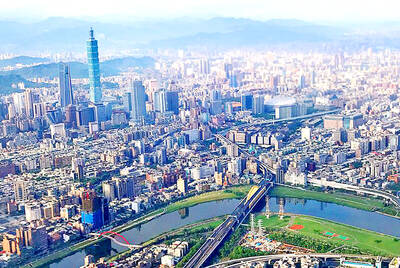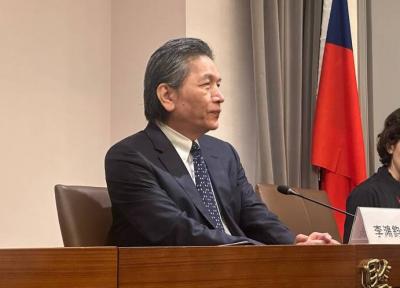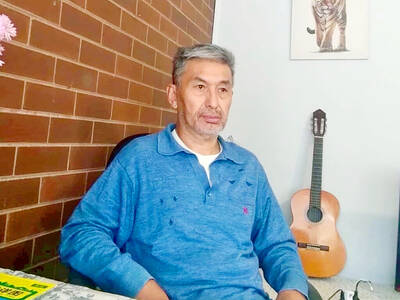The public should act quickly on symptoms of heart disease, such as tightness in the chest, difficulty breathing, weakness in the left limbs or dizziness, a Nantou County-based (南投) doctor said, adding that the cold weather increases the risk of stroke.
Emergency room (ER) director Wang Ssu-hung (王斯弘), from Yumin Hospital in the county’s Caotun Township (草屯), said he performed emergency surgery on a 58-year-old crane operator who collapsed after having a stroke.
The man was found on the ground next to his crane underneath the Shuei Sha Lian Highway, which runs through the township, Wang said.
Police arriving on the scene believed the man might have been intoxicated, but called an ambulance when they noticed that he did not smell of alcohol, Wang said, adding that doctors removed a blood clot and the patient is still recovering in hospital.
The cold weather has an effect on the cardiovascular system, including arteries in the brain, Wang said.
People who whose arteries have hardened or who suffer from chronic illnesses including hyperglycemia, hyperlipidemia and hypertension are particularly at risk of heart attack or stroke during the cold winter months, Wang said.
The age at which incidences occur has been decreasing, Wang said, adding that whereas the average age used to be between 50 and 60, more people in their 40s have been having heart attacks in the past few years.
Those who suffer from chronic conditions should pay close attention to symptoms when the weather gets cold, regardless of age, Wang said.
“When the weather gets cold, you have to stay warm at work,” he said, adding that it is better to stay indoors late at night and in the early morning when the temperature is the lowest.
“If you experience any characteristic symptoms of an impending heart attack, seek medical help immediately,” Wang said. “The sooner you seek help, the better your chances of being treated in time.”

Taipei has once again made it to the top 100 in Oxford Economics’ Global Cities Index 2025 report, moving up five places from last year to 60. The annual index, which was published last month, evaluated 1,000 of the most populated metropolises based on five indices — economics, human capital, quality of life, environment and governance. New York maintained its top spot this year, placing first in the economics index thanks to the strength of its vibrant financial industry and economic stability. Taipei ranked 263rd in economics, 44th in human capital, 15th in quality of life, 284th for environment and 75th in governance,

The Sports Administration yesterday demanded an apology from the national table tennis association for barring 17-year-old Yeh Yi-tian (葉伊恬) from competing in the upcoming World Table Tennis (WTT) United States Smash tournament in Las Vegas this July. The sports agency said in a statement that the Chinese Taipei Table Tennis Association (CTTTA) must explain to the public why it withdrew Yeh from the WTT tournament in Las Vegas. The sports agency said it contacted the association to express its disapproval of the decision-making process after receiving a complaint from Yeh’s coach, Chuang

Control Yuan Secretary-General Lee Chun-yi (李俊俋) tendered his resignation last night, admitting that he had misused a government vehicle, as reported by media. His resignation was immediately accepted by the Control Yuan. In a statement explaining why he had resigned, Lee apologized for using a Control Yuan vehicle to transport his dog to a pet grooming salon on May 20. The issue first came to light late last month, when TVBS News reported that Lee had instructed his driver to take the dog to the salon. The news channel broadcast photos that it said were taken by an unnamed whistle-blower, which purportedly showed the

A former officer in China’s People’s Liberation Army (PLA) who witnessed the aftermath of the 1989 Tiananmen Square massacre has warned that Taiwan could face a similar fate if China attempts to unify the country by force. Li Xiaoming (李曉明), who was deployed to Beijing as a junior officer during the crackdown, said Taiwanese people should study the massacre carefully, because it offers a glimpse of what Beijing is willing to do to suppress dissent. “What happened in Tiananmen Square could happen in Taiwan too,” Li told CNA in a May 22 interview, ahead of the massacre’s 36th anniversary. “If Taiwanese students or